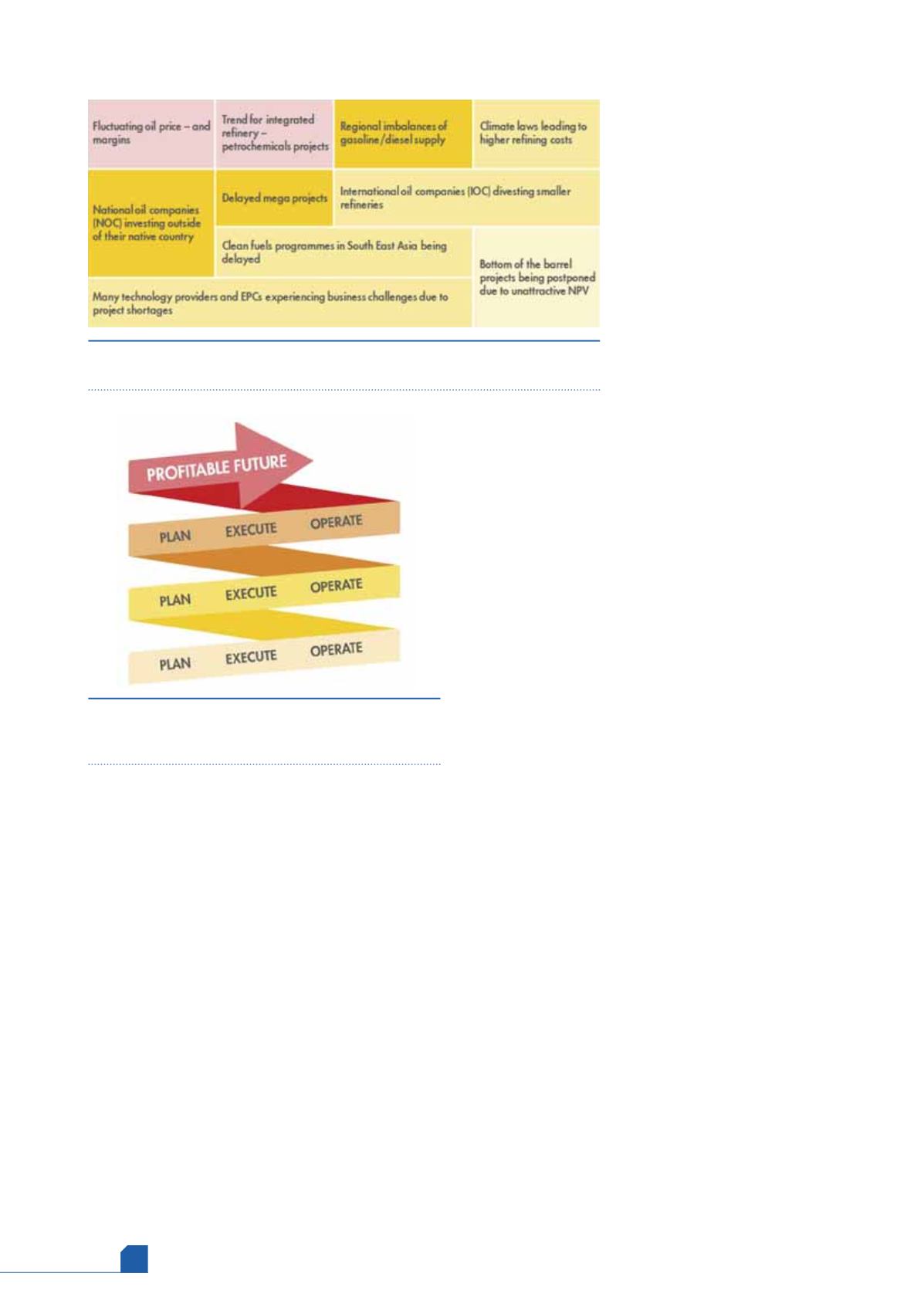
March
2017
HYDROCARBON
ENGINEERING
28
facing tough challenges as they search for
opportunities that will help to ensure profitability.
The situation for each refiner extends beyond local
market conditions and involves geopolitical and
macroeconomic influences that are not easy to
counter.
The power of continuous
improvement
Continuous improvement requires constant effort to
improve products, services or processes. The
approach covers both incremental and breakthrough
improvements that are designed to deliver significant
value in one step. All the refining industry’s top
performers are committed to continuous
improvement strategies. These strategies involve
investing in and optimising new projects, and,
crucially, having a steady pipeline of new projects to
develop.
The refinery operators that achieve the highest
performance all take a similar approach to delivering
and optimising their projects. They have processes
that enable continuous planning of new projects and
rapid execution of the selected
projects, and have a willingness
to optimise and adjust
operations after startup.
But that is only part of the
story. The key to continuing
success for leading refiners is
not to stand still. Once a project
has been through the
plan-execute-operate phases,
these operators will repeat the
process on the next project
(Figure 2). This is the crucial
aspect of continuous
improvement. The first step
towards achieving this is to
examine the key elements of the
plan-execute-operate cycle in more detail.
Planning: the quest for reliable, value
adding investments
Effective planning is the foundation for successful
and sustainable projects. Selecting the right skills and
finding the best support during the planning phase
are vitally important for refinery operators. Major
projects can take years to complete and are delivered
against an ever changing backdrop of geopolitical
and macroeconomic conditions. Refiners want to be
certain that their plan, and its configuration, will
prove to be the most effective option and that the
economic case for development is robust.
They must address some fundamental business
questions. How can they build in flexibility to meet
changing market conditions? What is the potential of
the refinery to accommodate opportunities such as
expansion to include petrochemical operations or
increased conversion flexibility? Defining short and
long-term strategies requires input from a competent
and experienced planner and a skilled workforce that
understands how to execute projects. Shell Global
Solutions works closely with refiners and challenges
the criteria that are set during the technology
selection phase. This approach helps operators to
avoid regret investments.
Selecting the refinery configuration is one of the
most difficult tasks that operators face during the
planning phase. To maximise the value of these
multi-billion dollar investments, operators must set
clear goals for the refinery and seek impartial advice
from experienced consultants who can help them to
define the ‘best’ configuration for operations in a
highly competitive market. It is always wise to
consider multiple future scenarios and to determine
whether the selected configuration could cope with
these potential scenarios.
Execution: finding the shortest route
from concept to startup
After careful and effective planning, the execution
phase can begin. As before, it is crucial that the
Figure 1.
Challenges, delays and postponements are common features of
today’s refining sector.
Figure 2.
Repeating the plan-execute-operate process
enables refiners to achieve a continuous improvement
cycle and leads to sustained profitability.








